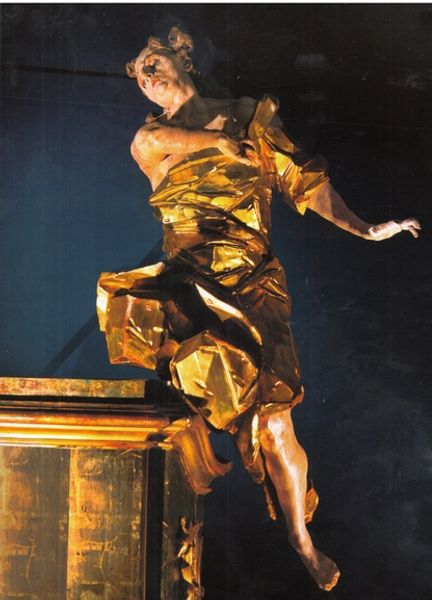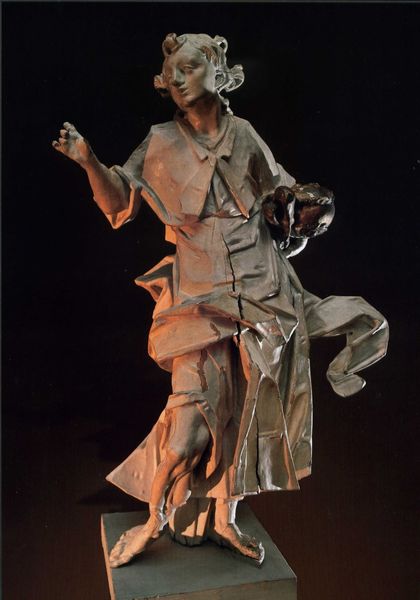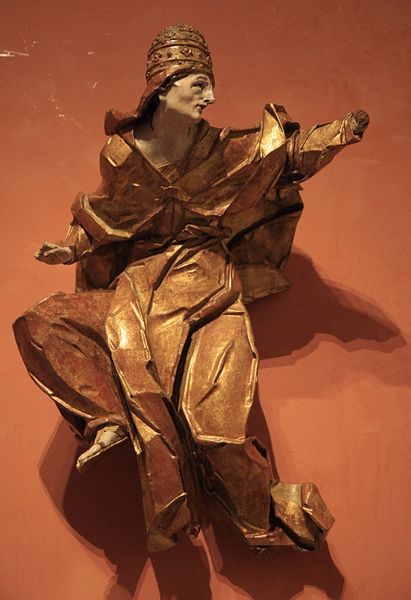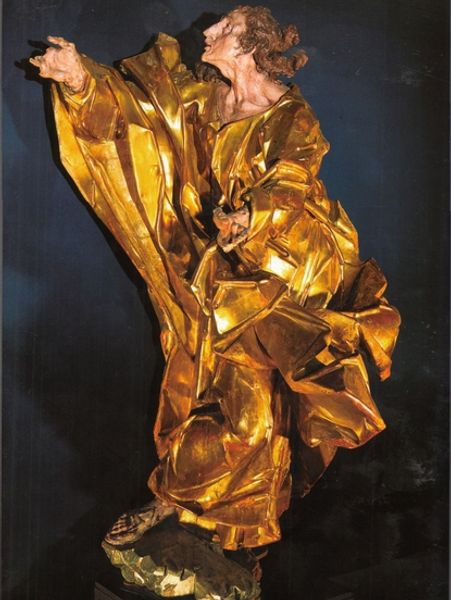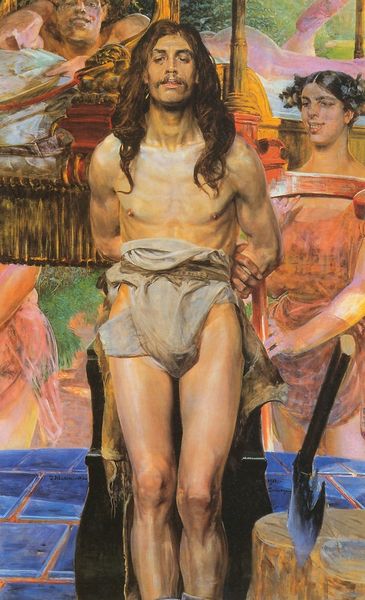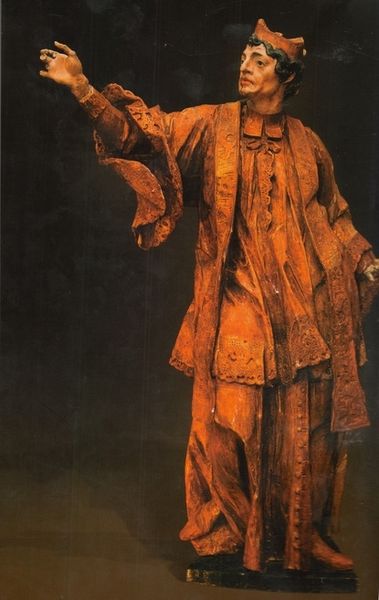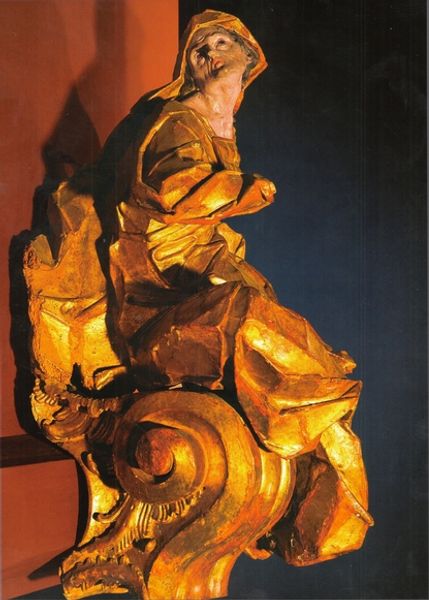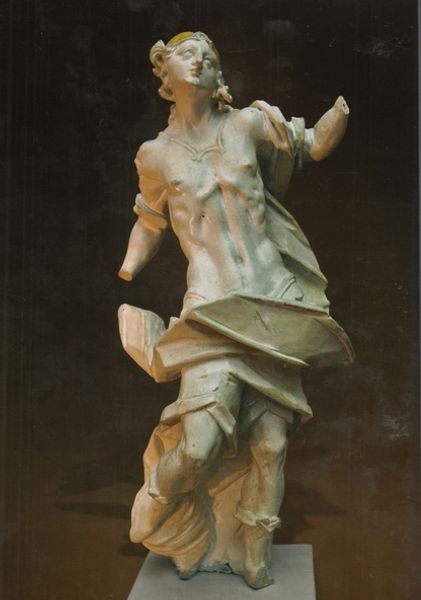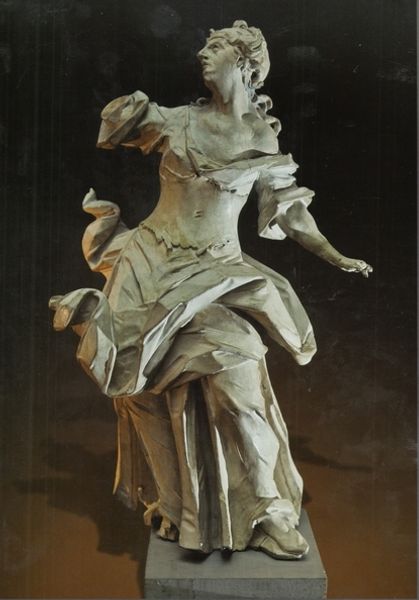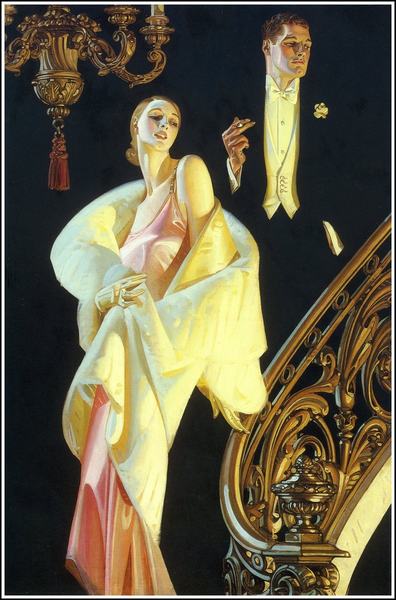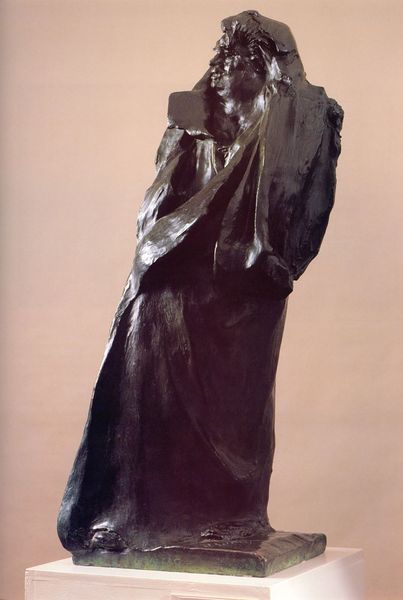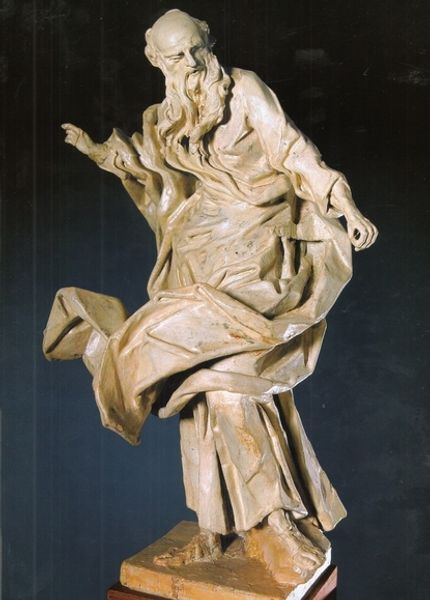
sculpture, wood
#
baroque
#
figuration
#
sculpture
#
arch
#
wood
#
history-painting
#
angel
Copyright: Public domain
Curator: Welcome! Before us is "Angel," a Baroque sculpture created around 1760 by Johann Georg Pinzel. Carved from wood, this sculpture exemplifies the dynamic movement characteristic of the period. Editor: My immediate impression is of raw emotion. The angel’s face is contorted in a powerful expression, maybe anguish? And that shimmering gold… It’s opulent and unsettling all at once. Curator: Precisely! The use of wood as the primary medium is key here. Pinzel's choice of wood allows for a directness in carving, resulting in a texture that amplifies the emotional intensity of the figure. The gilded drapery adds to the drama, but it also speaks to the consumption habits of the elites during the Baroque period, reflecting their pursuit of grandeur and divine favor. Editor: I see it. That frantic gesture, the robes clenched—it communicates a deep, almost desperate connection with faith. It reflects, in some ways, that angels represent messengers of God; and in the language of art, the drapery is used to signify dignity. Curator: Consider the cultural context. The Baroque style emerged as a response to the Protestant Reformation, a deliberate display of the Catholic Church's power and glory. Pinzel’s use of rich materials serves as a tangible assertion of that dominance. Wood itself was often sourced locally, linking the artwork to the land and community it served. Editor: It also prompts me to think about the psychological underpinnings of religious imagery during this period. The intense emotion and the depiction of angels served as intermediaries to grapple with mortality. Curator: A vital point! These were visual reminders that played a significant role in maintaining and reinforcing social order during a turbulent time in history. It is meant to provide direction to a culture struggling in conflict. Editor: So, we have an artwork reflecting complex spiritual needs intertwined with political statements and artisanal materiality. That gives us a lot to reflect upon! Curator: Indeed, Pinzel's Angel stands as a compelling example of how art acts as a mirror reflecting the material conditions and belief systems of its time.
Comments
No comments
Be the first to comment and join the conversation on the ultimate creative platform.
